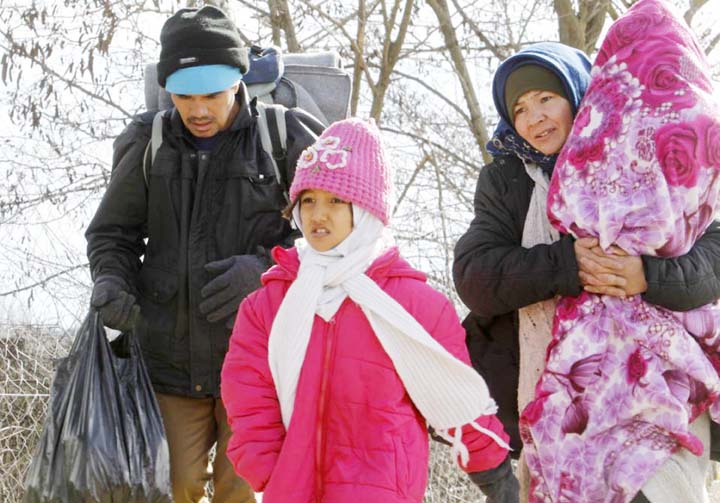
AP, Presevo :Rasul Orwani thought he had faced the worst after braving cold, rough seas in a rickety wooden boat to travel from Turkey to Greece, then came the Balkans.After arriving in Macedonia with dozens of other migrants, the group crossed into Serbia on foot in the middle of the night, icy snow stinging their eyes and lacing the children’s faces with tears.Their heads bent low to protect from the cold, the migrants trudged slowly through the snow, carrying babies, small children and belongings along the 2-kilometer (1.2 mile) stretch of the road over the so-called green boundary between the two Balkan nations. A 10-year-old boy took a blanket from his shoulders to wrap it around his younger sister as they walked across the frozen landscape hand in hand.Even as winter bears down on Europe and European Union countries set up new administrative hurdles for their entry, tens of thousands of migrants from the Middle East, Africa and Asia have been desperate enough to embark on the weeks-long journey across the Aegean Sea and along the so-called Balkan migrant corridor where frigid weather and stricter border controls have turned an already tough journey into an even more treacherous one.Safe in the Serbian town of Presevo on the border with Macedonia, Orwani said there was no turning back.”Our trip is very dangerous and risky,” the 20-year-old Orwani said. “We crossed the sea, we were in a boat, and the waves in the sea could easily sink us in the water.”While Europe took in more than 1 million people in 2015, EU countries have been struggling to limit the biggest migration to the continent since World War II. Some countries along the migrant route have said they want to slow the influx or even completely block it. Some of the nations imposed new, stricter regulations for those transiting toward their ultimate goal, Germany or other rich west European countries.As a result, dozens of refugees have been turned back from the borders amid freezing winter temperatures, while others have faced border closures and long hours in registration centers and refugee camps. Experts say the measures are unlikely to stop the flow, but could instead prompt the refugees to again start using illegal routes over razor-wire border fences and through forests, pushing them into the hands of ruthless smugglers.Aid groups say migrants passing through the Balkans have faced difficulty traveling in the snow and ice, and there has been a surge in cold-related illnesses.Women, children and babies, in particular, are in danger of hypothermia, according to the Save the Children aid group. It said migrants have been arriving in Serbia with blue lips, distressed and shaking from the cold. Exhausted mothers have told the group’s aid workers they are unable to keep their babies warm and dry, and are stumbling while carrying them on the icy roads.Saymira, from Afghanistan, crossed into Serbia with her husband and two young children just days before Orwani. Two months before her father and young sister died in the sea trying to reach a Greek Island from Turkey.”Now I am very sad, I cannot tolerate this situation,” she said while pushing a baby stroller through the snow on the border path between Macedonia and Serbia.Saymira said she was on her way to Germany because she has relatives there.Most refugees are not used to winter conditions, and many set off from home countries without warm clothing. Mirjana Milenkovski, the spokeswoman for the U.N. Refugee Agency in Serbia, said refugees are being provided heated shelter, bus transfers, warm drinks and clothes as they pass through Serbia and other countries.

